Public Works and Environmental Services Alert:

One example of an invasive species is Running Bamboo. This plant spreads quickly by its roots. It makes dense stands where nothing else can grow. If it crosses onto a neighbor’s property, it can create issues. Since January 2023, Fairfax County homeowners may be fined if bamboo is not removed or contained on their property.
Do not plant running bamboo. Learn how to spot, manage, and remove running bamboo to prevent issues for your yard and your neighbors. Information is available in multiple languages, including English, Arabic, Chinese, Farsi, Korean, Spanish, Urdu and Vietnamese.
Learn more about the damage it causes, how to contain, remove and dispose of Running Bamboo.
Find tips to identify and control high-ranking species.
Early Detection and Rapid Response lists emerging invasive species in Fairfax County and where they have been found.
High-ranking species commonly found in Fairfax County
Cards give ways to identify these common plants, the threat they cause, methods to control them and some native look-alikes.
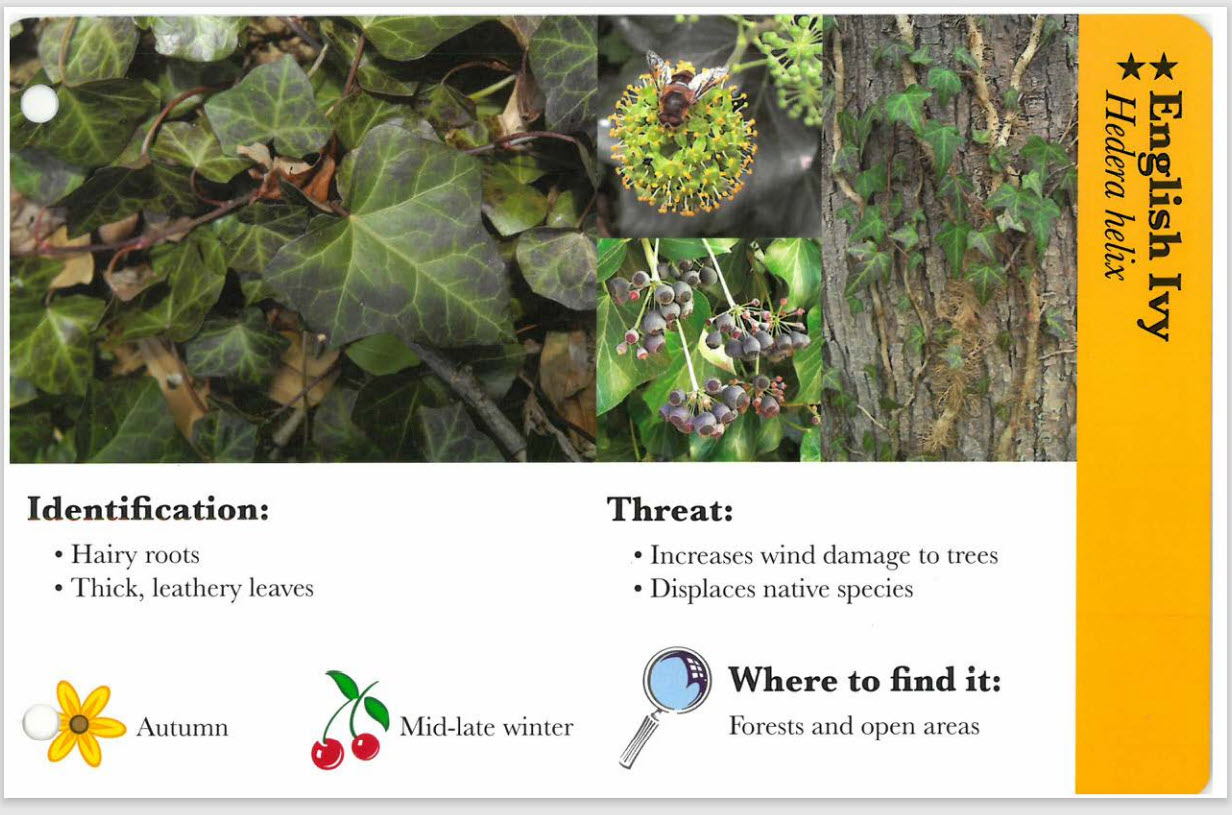
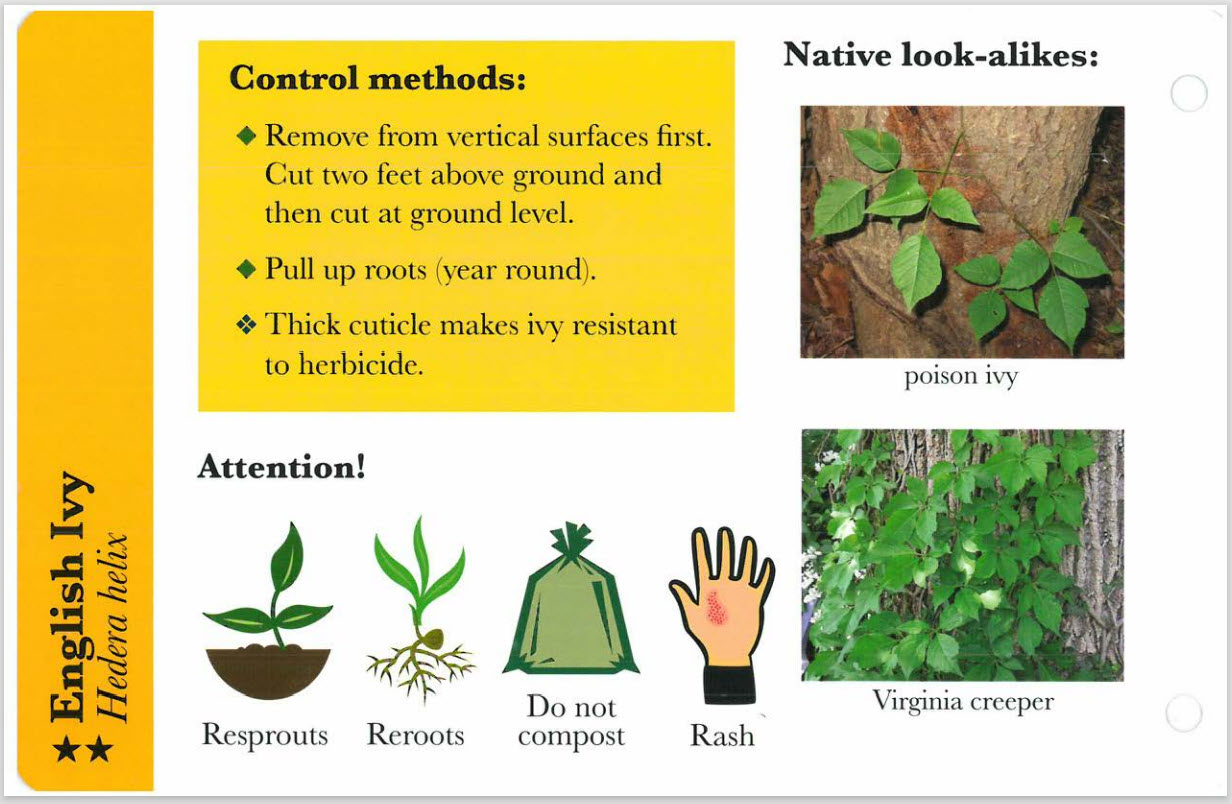
Girdling is cutting the bark and underlying tissue around the entire perimeter of the woody plant to stop the flow of water. A tree cannot recover from girdling because the vessels that transport water are completely removed.
The best way to deal with invasive plants and pests is to prevent spreading them in the first place. Learn to spot invasive species and report them to the right organizations. Take steps to manage and safely get rid of them if they are already in your area.
Managing invasive plants can feel overwhelming, but there are several methods you can use to control them. Success depends on the method chosen, how well it's applied, and the type of infestation. Often, combining different techniques works best. For personalized advice, consider hiring an invasive species management professional. You can also seek advice using the resources page. Remember to wear gloves, long pants, and long sleeves when handling the plants, and check for ticks afterward.
Knowing a plant’s life cycle helps you decide the best time to act. Plants grow and reproduce in seasonal patterns, so focus on these key moments:
Be aware of erosion and soil disturbance caused by clearing land. If removing the plant from the root will cause damage to other plants or increase erosion, other options include cutting/girdling, or chemical control.
You can join volunteer groups like the Invasive Management Area (IMA) program to remove invasive plants in parks and replace them with native ones. Even a few hours of help makes a difference!
Visit Invasive Management Area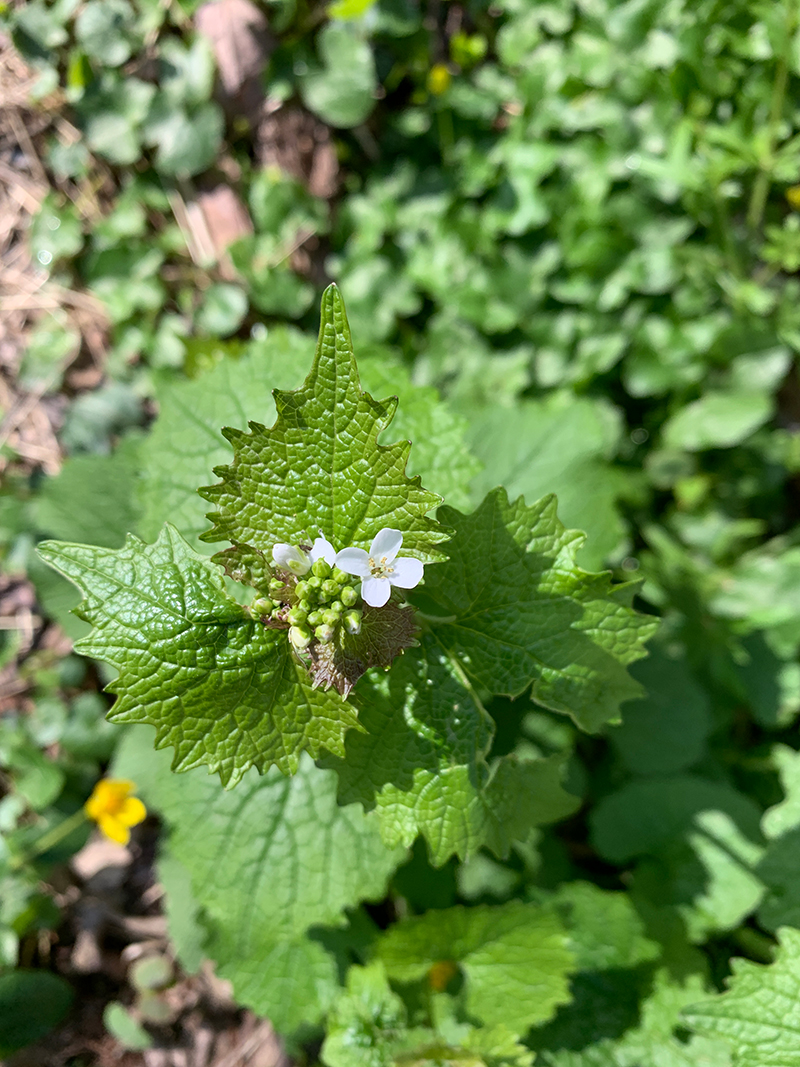
Cultural practices involve simple habits to help stop invasive plants from spreading. Here’s how you can help:
Small changes like these can make a big difference in controlling invasive species in your community!
Manual or mechanical practices mean physically removing invasive plants. This includes cutting, pulling, digging, or smothering them. These methods work best for smaller infestations.
Keep in Mind:
These hands-on methods are simple and effective when done properly!
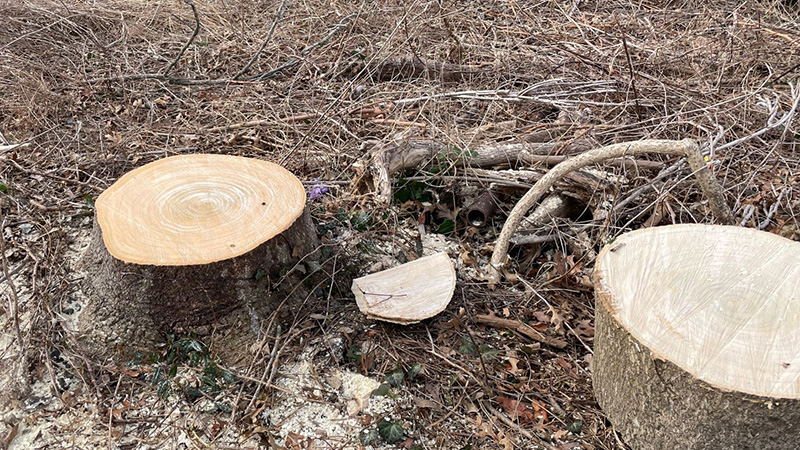
Cutting or girdling invasive trees, like the Tree-of-heaven, can often backfire as the tree produces many sprouts and suckers in response. Here’s how to manage invasive trees effectively:
Best Practices:
Safety Tips for Removing Large Trees:
If the tree is near buildings, sidewalks, or play areas, consult an ISA-certified arborist to safely handle removal and avoid damage. For expert advice, contact Fairfax County's Urban and Community Forestry Division during regular hours at 703-324-1770, TTY 711, or email treemail@fairfaxcounty.gov.
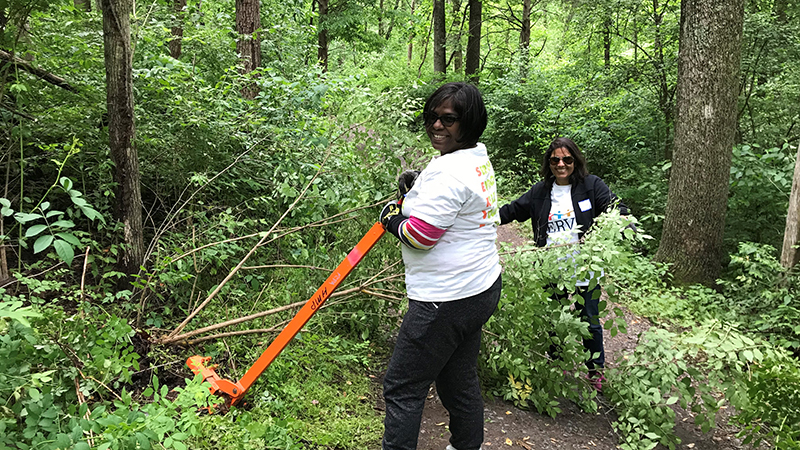
How to Manage Shrubs:
By reducing soil disturbance and properly disposing of debris, you can help prevent invasive shrubs from spreading further.
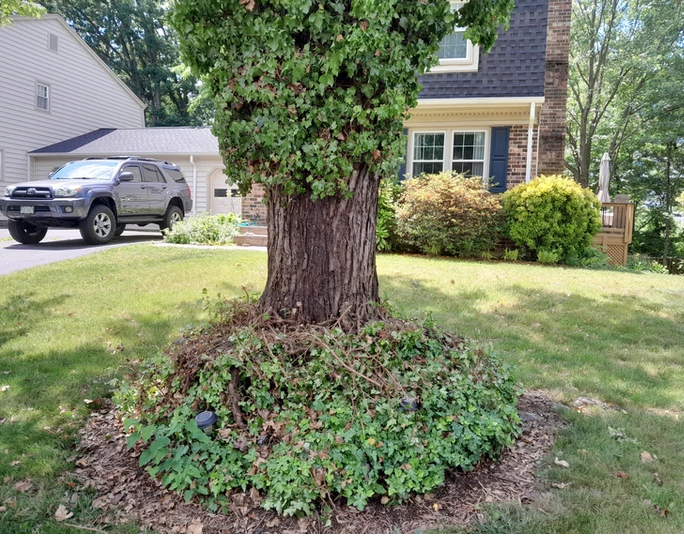
Manual Removal
Manual removal is precise and minimizes harm to nearby plants, but it can be slow and labor-intensive. This method is best for small, easy-to-reach infested areas.
Steps for Removal:
Timing:
Hand-weeding is most effective early in the growing season (April-May) when roots are small and vines haven’t tangled with other plants. Monthly monitoring and removal will be needed until the infestation is eliminated.
Acting early and consistently will help manage invasive vines while protecting native trees and plants. Visit Rescuing Trees, Plant NOVA Natives for more information.
How to Remove Groundcover:
For Larger Infestations:
Prevent Soil Damage:
Be cautious of erosion and soil disturbance caused by removing plants and roots. Use methods carefully to avoid harming the surrounding environment.
By removing groundcover early and consistently, you can prevent it from spreading further and protect the soil from damage. See Land Disturbance.
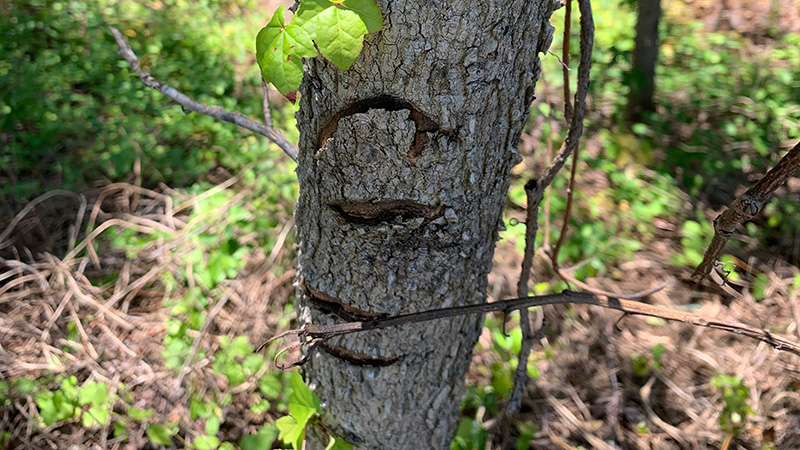
Herbicides
Herbicides can be used to manage invasive plants, especially those that are deeply rooted or well-established. This method is practical for large infestations but must be done safely and responsibly.
Key Tips for Safe Use:
Herbicides can be an effective tool for managing invasive plants when mechanical methods aren’t enough. Careful storage and use are critical to avoid unintended damage to the land and yourself.
Fairfax County and the Park Authority use herbicides and pesticides carefully as part of a broader invasive species management plan. When mechanical methods aren’t suitable, chemical treatments are applied following strict guidelines.
Key Points:
Regulations and Safety:
Herbicides are an essential tool for restoring habitats and protecting natural areas. Their use is always carefully managed to minimize risks and maximize effectiveness.
Stay Safe and Follow Guidelines:
For detailed instructions and resources, visit Blue Ridge PRISM Inc, or check the guide from the Department of Conservation and Recreation on Managing Invasive Plants. Safe chemical use ensures effective removal while protecting yourself and the environment!
By choosing the correct method and following label instructions, you can safely and effectively use herbicides to manage invasive plants and trees.
Biocontrol uses living organisms to manage pest species naturally. It is an eco-friendly method of controlling invasive plants and pests without harsh chemicals.
Examples of Biocontrol:
Important Information:
Fairfax County and the Park Authority work with state and federal agencies to carefully implement biocontrol strategies. Residents cannot release organisms into parkland without approval from Park Authority staff. Biocontrol can be highly effective while protecting the environment, but it must be carefully managed to ensure safety and success.
Proper disposal of invasive plants is essential to prevent their spread:
Steps for Disposal:
Do Not Dump Waste:
Do not dump yard waste in natural areas as it can spread invasive species and harm native seedlings or plants.
Dispose of plant materials responsibly to help keep invasive plants from taking root elsewhere!
If you're looking for more guidance and alternative methods for dealing with invasive plants, these resources provide detailed recommendations, management strategies, and helpful tools:
Additional Resource:
Explore these resources for expert advice on timing control efforts, effective techniques, and understanding invasive plant species in your area!
The best ways to manage invasive forest pests and wildlife are prevention and early detection.
What You Can Do:
Firewood Reminder:
Always buy firewood near where you plan to burn it. Never move firewood to another location. It can carry harmful insect pests and diseases. Visit dontmovefirewood.org for more tips.
Prevention and early detection are key to stopping invasive pests from harming forests and ecosystems!
Tree diseases can pose serious threats to the most abundant forest species such as Beech, Oak, Walnut, and Sassafras. Early detection and action are crucial to protect trees and forests.
What You Can Do:
Take Action:
Treatment of infected trees should always be handled by a professional to ensure proper care and prevent further spread.
Protecting trees from disease helps safeguard the health of forests and ecosystems!
